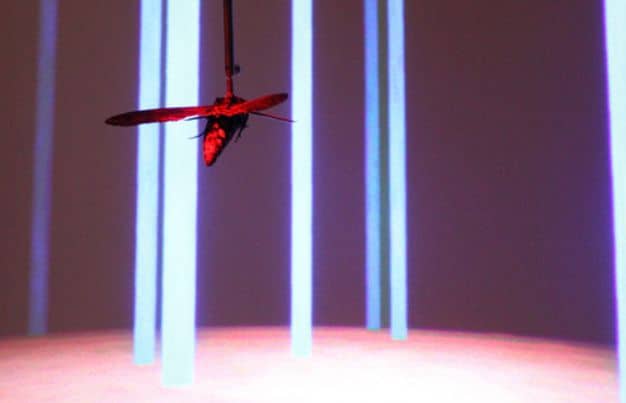To dodge trees when they navigate in forests or other complex environments, drones present certain difficulties. To improve it, a team of scientists is developing a new program based on the real flight paths of the moths
The decision making of autonomous vehicles presents certain problems when they navigate complex and unknown environments when they encounter various obstacles in their route. The same situation is experienced by moths, for example, flying among trees, but they do it without difficulties.
Based on the actual flight paths of these insects, a team from Boston and Washington universities are developing a program that would improve drone navigation. The results have been published in the journal PLoS Computational Biology.
The researchers, led by Ioannis Paschalidis (Boston) and Thomas Daniel (Washington), studied the flight of eight hawk moths hooked to metal bars that in turn were connected to torque meters, in order to understand how these butterflies plan their route at night.
In front of them, the research group projected a moving forest scene created from beams of light so that the moth could navigate. In this way, experts were able to capture insect flight data and built a mathematical model to describe their trajectory through the virtual forest.
The flight data was translated into a decision-making program that could be used to control a drone. To reach these conclusions, the scientists compared how moths and drones flew through the same forested scenario, as well as in others with different tree densities.
How moths decide
The researchers found that hawk moths rely primarily on the pattern created by the apparent movement of objects caused by their flight, which is consistent with studies of flight behaviour in other insects.
However, flight programs optimized for drones had a performance 60% better in the simulated forest because also incorporated into their navigation decisions about the exact location of objects.
Although scientists were able to optimize the strategy used by moths to improve performance in certain environments, the moths strategy was more flexible and worked best in a variety of different forest designs. The moth model performed better in dense forests, suggesting that hawkmoths have developed a flight strategy adapted to the thick forests they often encounter.
The researchers conclude that through the use of real animal flight route data, they can program drones of biological inspiration that can navigate autonomously in disordered environments.
